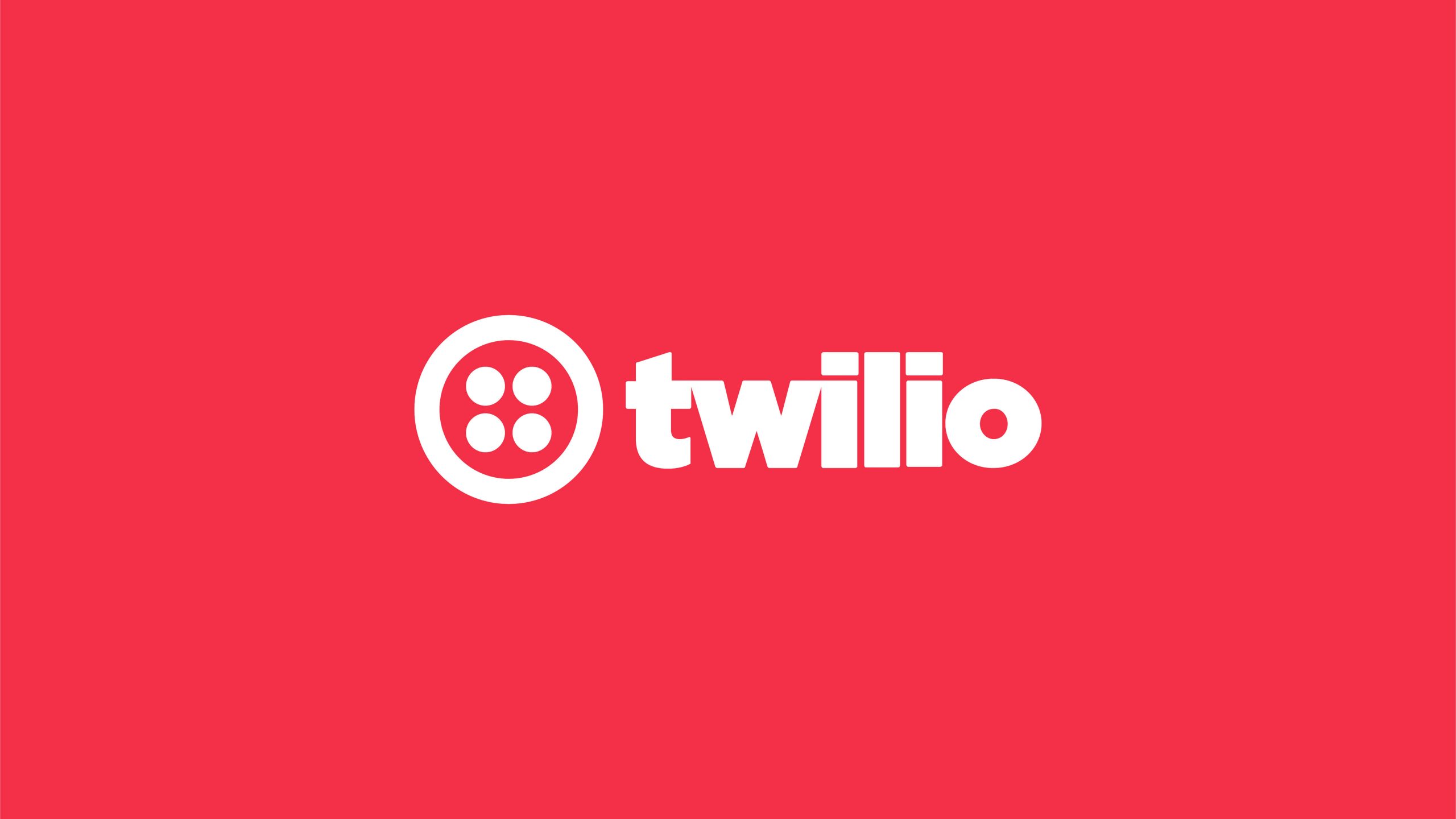
What Is Twilio? A Comprehensive Guide To Understanding Twilio In 2023
Jerry Wallis
19 min read

🔔 This article has been updated with the latest information & developments as of April 2023.
To maintain a competitive edge, businesses must communicate with their customers across multiple channels. This is where Twilio comes in, offering a comprehensive cloud communications platform that enables businesses to build, scale, and operate customised communications applications on a global scale. But what is Twilio?
Whether you’re a startup or a large enterprise, Twilio’s cloud communications platform offers a variety of solutions that can be customised to meet your specific needs. From voice and video to messaging and authentication, the platform can help you connect with your customers seamlessly and efficiently. We will delve into each of these solutions, discussing how they work and their benefits.
Additionally, we will explore the pros and cons of using Twilio, helping you make an informed decision about whether it’s the right choice for your business. We’ll also look at some real-world examples of how it has helped other businesses succeed, giving you insight into the platform’s potential.
So, whether you’re new to Twilio or just looking to deepen your understanding of its capabilities, this guide will provide you with everything you need to know to get started in 2023.
A New Way Of Interacting With Your Customers 💬
Communicating with customers has evolved over the last 20 years, mainly due to the evolution of technology. Put simply, what worked then, doesn’t work now. Depending on the type of business you are involved in, you might notify customers of order status, provide support via phone call or email, or confirm a reservation over a text message. These are just a few examples of how businesses like yours communicate and support their customers.
Today’s consumers expect prompt and helpful support and frequent communication from your website, app, social media, or email.
But is it essential to communicate with your customers every day and everywhere? And when do you know it’s too much? The key is to connect with your audience in the communication channels that they use daily; otherwise, you are just wasting your time and money.
How should you manage this with the myriad of available communication channels and customer expectations for information and support? Reaching customers across all of these channels securely worldwide is one thing, but it can be extremely overwhelming when multiple carriers, networking gear, and foreign regulations are factored in. This is where a solution like Twilio comes in!
What Is Twilio? ☁️

Twilio is a cloud communication platform that enables you to engage with your customers however you’d like. The company was co-founded by software developer turned CEO, Jeff Lawson, in 2008. Lawson established Twilio with his team to provide developers with the tools they needed to build scalable and customised communication experiences for businesses. His expertise and track record in maximally utilising the capabilities of developers to create software innovation is remarkable. It has been well-documented in the Wall Street Journal bestseller, “Ask Your Developer”.
Twilio is popular amongst countless software developers and over 190,000 businesses, enabling approximately 932 billion digital interactions annually. While primarily suited to extensive-scale customer interactions, the platform is still a viable option for companies wanting to reach fewer audiences.
The point is that Twilio will make it work for you whether you are sending 100 SMS or emails or a billion of them!
✨ The Wonderful World Of APIs
Twilio’s platform is purely API driven — but what does that essentially mean? API stands for application programming interface, an essential building block that facilitates communication between software applications. In a more technical sense, they enable “integrations” between application programs so that they can both run seamlessly together, giving the user a single platform with functionalities of both applications.
An example of this would be an eCommerce application supported by third-party freight software. They work together because of an integration built through an API to provide users with a holistic online shopping experience.
So, through Twilio’s communication APIs, all it takes to send a text, make a call, or start a chat on your app or website is a few lines of code. Yes, it is that simple! Yet, you’ll still need assistance from a knowledgeable programmer who knows what they are doing.
Twilio’s APIs are a programmable set of connection blocks that allow developers to build customised customer communication experiences. The Twilio Customer Engagement Platform, which is its developer platform for communications, can be used to create almost any digital communication experience. This is where the customisable aspect of the platform comes into play.
Think of it this way — as a business, you may want to communicate with your prospects via emails, phone calls, SMS, voice chat, you name it; Twilio probably has a solution.
📦 Twilio’s Product Library
Next, let’s talk about the different products that Twilio offers. They have various products and services at their disposal, from their cloud contact centre, Twilio Flex, and UI-based email marketing tools to their popular channel APIs used for communication with customers on their preferred channels.
With all of the different products that the platform provides, it can be a great communication asset to build reliability and global reach to deliver excellent customer service and foster engagement and loyalty in your customers. They have APIs for almost all major communication channels, and you’ll find a few of their APIs that work best with your ideal buyers.
We’ll go over some of these products in greater detail in the next section.
What Does Twilio Do? 🤷♀️
Twilio’s customer engagement platform is unlike any other. They provide catered solutions to different industries and the three phases of the customer lifecycle — marketing, sales, and service. They have solutions to take your digital customer interactions to the next level, such as the following.
💪 Twilio Flex
Twilio Flex is perhaps the most popular solution provided by the platform. It is the leading cloud contact centre platform that can be used to create an omnichannel contact centre to serve customers. The platform supports email, SMS, WhatsApp, WebChat, Messenger and more — and it provides a single UI to manage tasks across multiple channels. You can create engagement and communication workflows catered to your business and also integrate the platform with your CRM to get relevant customer information from a single source.

👩💼 Twilio Frontline
Twilio Frontline is a programmable and ready-to-use customer relationship application designed for your sales team. Frontline comes with customisable workflows that can be integrated with your CRM to empower your sales team with a single application to build customer relationships and guide customers through the purchase funnel.
📣 Marketing Campaigns
Twilio also provides an email marketing tool called Marketing Campaigns, which is excellent for quickly sending high-quality, engaging emails to large audience segments. Businesses commonly use this tool to send emails for newsletters, company announcements, privacy updates, rewards programs, onboarding, and more.
Next, we’ll discuss some communication channel APIs that make Twilio amazing for reaching customers across multiple platforms.
📲 Messaging
Twilio’s programmable messaging API has everything you’ll ever need to send and receive messages at scale globally on SMS, MMS and WhatsApp.
🗣️ Voice
With Twilio’s programmable voice API, you’ll be able to create a scalable voice experience with your customers around the world. You’ll get additional benefits and features such as Alerts & Notifications, Call Tracking, Embedded Calling, Global Conferencing, Masked Calling, and Interactive Voice Response (IVR).
🎥 Video
Using the programmable video API, you can add video chat functionality to your web, iOS, and Android applications. Twilio Video will provide you with APIs and guiding tools to create real-time customised video communication experiences for your customers.
How Does Twilio Work? ⚙️
As discussed earlier, APIs are the heart and soul of Twilio. But what is it precisely that the platform is doing for you? In many ways, it bridges the gap between web applications and communication channels. Let’s put this into perspective with an example.
Unlike the internet, the telephone world is far more complex. It requires multiple protocols to manage session initiation, real-time communication, and device connectivity over other things. It’s no easy feat to build a custom communication functionality, such as a company-wide phone infrastructure, as an example.
The solution was provided by the platform, which saw an evident lack of connection between the Internet and the telephone network and aimed to fill the gap between the two networks. Essentially, your web application can integrate seamlessly with complex carrier networks, and as a result, you can make phone calls with customers globally in a matter of seconds with Twilio.
Being an utterly API-driven platform, Twilio provides high-quality documentation that will guide your developers through the process. It contains in-depth instructions and guides with complete sample applications. They provide you with a detailed list of starting languages and learning resources to get you started. For example, if you want to use the SMS API, you’ve got code examples for Node.js, C#, Ruby, PHP, Python, Java, etc.

Advantages Of Using Twilio 🔥
The platform understands that global cross-communication is not a one-size-fits-all solution, so they provide customisation options through programmable APIs. Businesses like yours can build digital experiences relevant to their specific business logic. Specificity is critical, and through the platform, you can build customer interaction experiences that suit your brand’s intent, size and customer engagement culture.
Essentially, all it comes down to is that if you are trying to communicate digitally with your customers at scale, then Twilio is a solution provider that you must take a look at. Their variety of different channel APIs just cannot be ignored. But that’s not the end of it, and we’ve compiled a list of some other advantages of using Twilio as a cloud communication platform below.
💰 Pay As You Go
Perhaps, one of their most significant selling points, you don’t have to commit to an expensive subscription to use the platform. Because of their usage-based pricing policy, you will pay for the extent of what you use the platform for. We’ll go over pricing in further detail later in this article.
⚡ Fast Implementation
While it’s not drag-and-drop, it could be more technical and complicated to implement. The Twilio APIs are powerful yet simple to use, and detailed documentation and tutorials will seamlessly guide your developers through the implementation process.
🛡️ Superb Security Features
The platform takes your security seriously, offering encrypted communications that keep your conversations secure between the API and application. Rest easy knowing you can communicate with confidence. It also offers HTTP Basic and Digest Authentication, which will let you password protect the TwiML URLs on your web server. Essentially, only you and Twilio will be able to access this information. The platform will also not connect to an HTTPS URL with a self-signed certificate, so make sure you are using a certificate from an authorised provider such as Let’s Encrypt.
⭐ Holistic Digital Communication Solutions
Want to reach your customers around the world on multiple channels? Well, that’s precisely what Twilio will help you with. The platform comes pre-integrated with popular communication channels like Facebook, WhatsApp, Messenger, Email, Voice, and SMS so that you can reach your customers where they prefer.
🙋♂️ Understand Your Customers
By integrating your CRM with the platform, you’ll gain unique insights into your customers’ preferences and behaviour, helping you better understand the buyer’s overall journey. You can even track calls and attribute sources to measure marketing ROI and effectiveness and make informed decisions moving forward.
🏢 Suitable For Businesses Of All Sizes
Whether you are a multinational enterprise or a small to midsize business, Twilio’s communication tools are scalable to suit your specific needs for all things customer interaction. If you want to send bulk messages to your customers or even your employees or like to notify a select customer about their shipping status, the platform will make that happen.
👔 Excellent Customer Service
Twilio prides itself on its personalised customer service. They have guaranteed responsiveness based on the inquiry’s priority level. They have a dedicated technical account manager who knows your setup and business and wastes no time helping you resolve any issues. Furthermore, they have 24/7 live chat support and different tier-based support packages that you can purchase based on your budget.
📶 Reliable Connectivity
This is a big one; the platform’s Super Network solidifies the carrier communication network leading to better connectivity and unrivalled scale for communication. Instead of building a network of carriers yourself, the Twilio software will help you use a global ecosystem of carriers in a few clicks. Plus, they use proactive routing measures to detect potential outages with carriers to establish a reliable and high-quality connection.
Disadvantages Of Twilio ⛔
Now that you know Twilio’s benefits, it’s also essential to note its shortcomings. While the platform’s programmable APIs are robust and relatively easy to use, you’ll still need a developer to set everything up. This means that you’ll have to invest additional costs to work with developers if you don’t already have access to such resources.
Based on observations of customer reviews on TrustRadius, most existing and past users feel that the software could work on:
- The layout and user interface to make the platform easier for everyone, not just developers and IT professionals.
- The explanation of services, which was confusing for some customers and took longer to understand fully.
- The email/OTP authentication of Twilio, which some felt becomes a bottleneck when multiple users have to access the dashboard. However, introducing multi-user privileges should solve this issue.
- Introducing a lite version of the web interface for new users, which is a great idea some users suggested, as the main version can be a bit overwhelming for first-time users.
How Has Twilio Helped Other Businesses? 💡
Let’s take a few real-life use case scenarios of Twilio to understand better how the platform helps businesses achieve customer engagement excellence.
🚕 Lyft

We’ll start with Lyft, a transport service provider akin to Uber. Lyft uses Twilio Flex, the platform’s customisable cloud call centre solution, to deliver exceptional driver and rider experiences. In the past, Lyft was having issues with their contact centre, where they had to look up an average of 11 data fields for each contact, and each required at least three clicks to access across multiple channels.
By using Twilio Flex, they could use a single source of truth to bring all of that data and use it as they saw fit, thereby reducing the constant cross-platform switching that was producing too much unnecessary work and harming customer relationships.
🏡 Airbnb

Another interesting case study comes from Airbnb, which used Twilio during its early days to streamline administrative processes. When the business was scaling and going through those “rapid-growth issues,” it encountered a significant problem with follow-up calls.
Back then, when a user submitted a booking request on the Airbnb website, the host would receive an email, but when hosts took too long to respond, Airbnb reps would telephone the host, reminding them that a user was waiting to hear back. Twilio solved this problem by introducing a feature where hosts could accept requests via SMS if they hadn’t accepted the initial emailed booking request. This improved the percentage of booking success while reducing hours of manual calling.
🌐 WEBO Digital
Twilio was recently also used in one of our own projects. Here’s what Rojan Shrestha, our superstar Development Project Manager, had to say about using the platform:
“We used Twilio in one of our recent custom-software development projects. Its Verify API was used to send OTP (one-time-password) codes via SMS to users who had enabled multi-factor authentication in their accounts. Our development team found the system to be user friendly, and the API and associated documentation were up to date and very easy to implement.”
API Integrations With Twilio 🔗
The Twilio API is versatile and powerful and facilitates smooth integrations with a variety of applications and software that will help you get more out of this cloud-based communication software. Integrating it into your application can enhance your customer’s experience with your brand.
With its cloud communications platform, the platform offers a variety of programmable messaging, voice, and video APIs that allow businesses to easily incorporate advanced communication functionality into their applications. But with so many applications available, how do you choose the right one that can seamlessly integrate with Twilio? We’ve selected a few of the best ones that could add the most value to your business in the list below.
🧰 CRM Tools
A contact centre cannot run at its max potential without adequate customer data feeding into it. Gathering customer data in a centralised location will help your CX team create better experiences for your customers through improved personalisation.

Integrating with customer relationships management platforms such as HubSpot CRM, Salesforce, and Zendesk will help you build an ultimate customer-oriented communications solution. You’ll have a natural sync of customer data between your CRM and the contact centre, all of which can be accessed from a single application. For instance, by integrating the Twilio API with HubSpot, you’ll be able to automate communication workflows, such as sending SMS reminders or making phone calls to follow up on leads.
With customer data at your disposal, your communication agents will have the prior interaction information they need to jump right into solving the customer’s problems and spend less time asking repetitive questions. Your CX team will thank you for this.
🗨️ Other Messaging Platforms
Twilio in itself is a telecommunications giant, so why add other messaging services to the picture? Simple, to go Omnichannel! What this means is throughout all communications touchpoints, your customers will always receive the same, consistent experience with your brand.
Text-based social media messaging apps are massively popular, more so than any other communications outlet. So, brands need to get in on the action. When you integrate Twilio with applications such as WhatsApp, Messenger, and Discord, you’ll make your communications center more accessible whilst allowing your CX team to switch between channels to align with the customer’s preferences.
How To Integrate Applications With Twilio 🛠️
Twilio has a number of ways to integrate your application, including the Twilio API, webhooks, and Twilio SDKs. The Twilio API allows you to send and receive text messages, phone calls, and other types of communication programmatically. Webhooks allow the platform to communicate with your application by sending HTTP requests to a URL you specify.
The platform uses Webhooks to inform your application when certain incidents take place, such as receiving a phone call or SMS message. And the Twilio SDKs provide libraries for a number of programming languages, making it easy to integrate it into your application.
🤝 Twilio API Integration Best Practices
When integrating applications with Twilio, there are a number of best practices to keep in mind. These include:
- Use the Twilio API to send and receive text messages, phone calls, and other types of communication.
- Use webhooks to receive communication events from the platform.
- Use the Twilio SDKs to make it easier to integrate it into your application.
- Monitor your application’s usage of the Twilio API to ensure you’re not exceeding rate limits.
🚧 Common Challenges Faced When Integrating Twilio
Authentication & Authorisation
One of the most common challenges when integrating Twilio is authentication and authorisation. The platform uses the HTTP Basic authentication scheme for API requests. Developers will need to create an account with Twilio and obtain an Account SID and Auth Token to authenticate their requests.
Handling Errors
The Twilio API returns error codes for failed requests, and your app will need to identify and handle these errors. Proper error handling can help you avoid unexpected behaviour, such as performance drop-offs in your application, and improve the overall user experience.
API Versioning
Twilio is fairly active with new releases and version updates of their API, which can introduce new functionality or break changes in your application. So, It is important to ensure that your application is using the correct version of the Twilio API and that it is future-proofed to handle any changes in API versions.
How Much Does Twilio Cost? 💸
One of the best things about Twilio is its flexible “pay as you go” pricing model so that you won’t get locked into big contracts or monthly subscription fees. The platform also offers volume and committed usage discounts as additional pricing incentives. Below is the pricing on some of Twilio’s solutions as of April 2023.
- Twilio Engage, their customer experience tool, comes in three tiers – Free, Team (around AU $180/month), and Business (Custom Pricing).
- Twilio Flex is priced at around AU $1.5 per active user hour or around AU $225 per named user per month after the expiration of the first 5000 hours, which is free.
- SMS & Messaging start at AU $0.011 to send or receive a message through Twilio.
- The WhatsApp Business API is priced at AU $0.0063 for every template message, while session messages on WhatsApp via Twilio will cost AU $0.0074 per message.
If we compare this with some other communication APIs and messaging services, then Bandwidth which offers similar features, charges AU $0.0074 per outbound message, AU $0.0082 per inbound call, AU $0.52 per phone number, and AU $0.015 per minute for outbound calls. Inbound messaging is free on the platform.
If you want to see the latest info on this, head over to Twilio’s pricing page for detailed information on the cost associated with the different API solutions.
Final Thoughts 🧐
If your business needs to communicate regularly with customers across multiple platforms on a global scale, Twilio should be a no-brainer. Furthermore, if you already have developers and technical expertise in your company, they can help you set up and implement the platform in no time.
On the other hand, Twilio can be an expensive investment for small to medium enterprises, not just price-wise but also considering time and effort. It would mean shifting your entire consumer communication process, which may be unnecessary if there isn’t a need to do so already.
Ultimately, if you would like to learn more about Twilio and other tools, feel free to reach out to us, and our expert team members will be more than happy to answer your questions.
Topics
Published On
May 09, 2022

